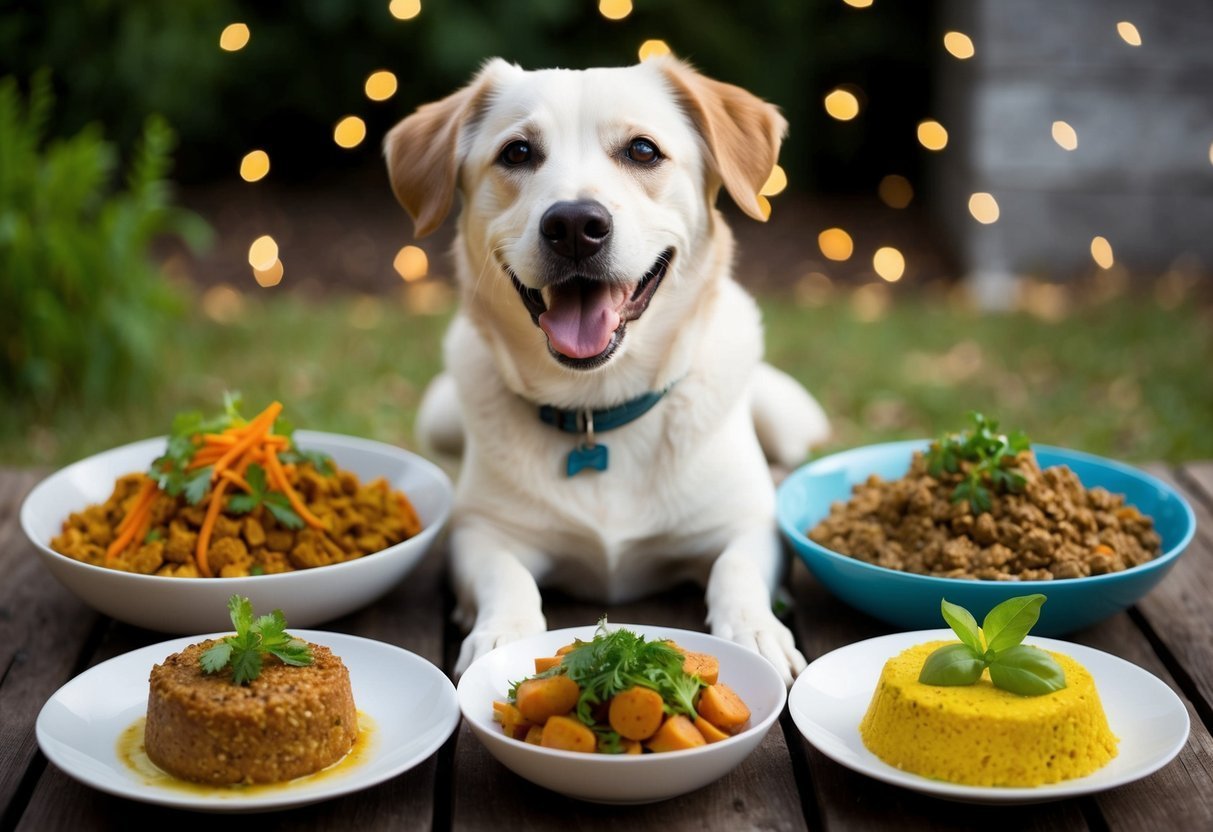As a dog owner, you want the best for your furry friend, and that includes the food they eat.
Making low-fat dog food at home can be a simple and tasty way to ensure your pup gets the nutrition they need without extra calories.
With these five low-fat dog food recipes, you can create meals that taste better than anything you might find in the store.
You may worry about your dog’s weight and health, and buying low-fat options can sometimes be a challenge.
These recipes not only help you manage your dog’s weight but also let you control the ingredients, ensuring that your pet enjoys every bite.
Your pup deserves delicious meals, and making them at home can strengthen the bond between you both.
Turkey and Quinoa Delight
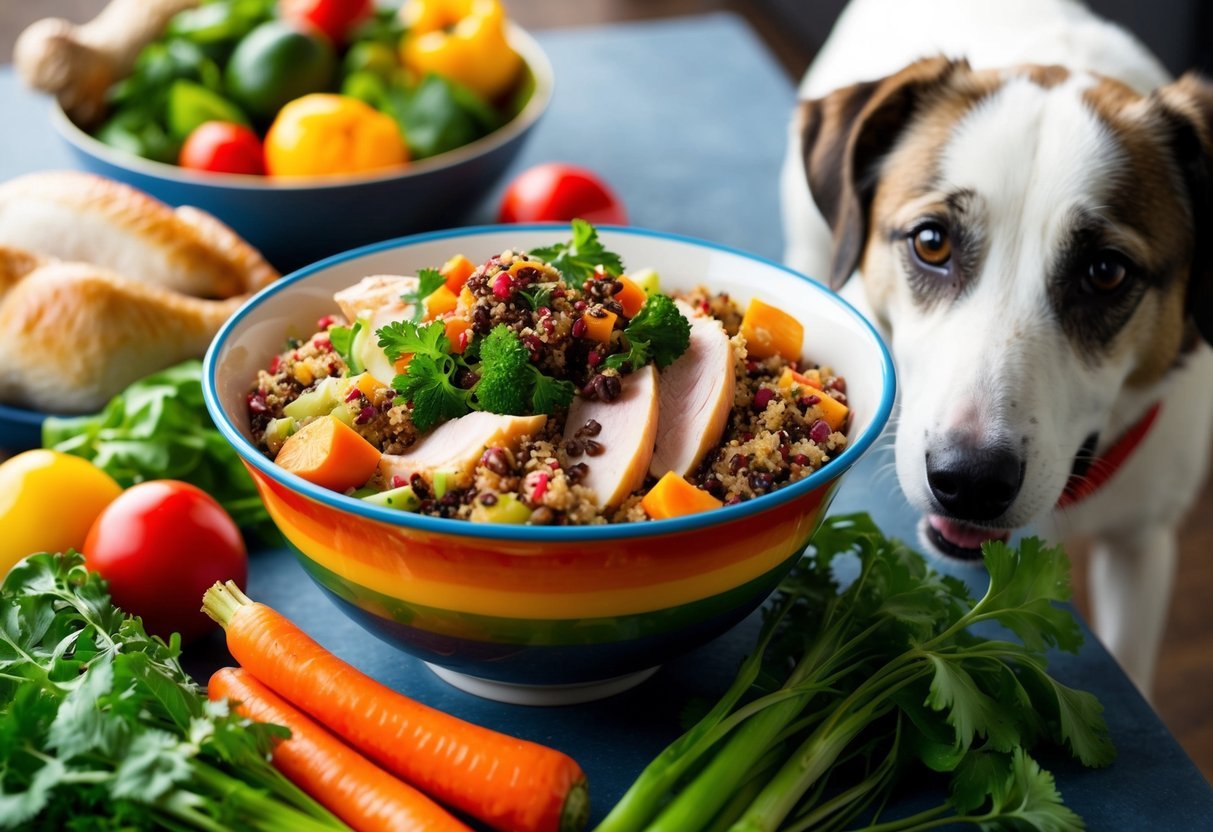
Turkey and quinoa make a tasty and healthy combo for your dog.
This recipe is easy to prepare and full of nutrients.
Start with lean ground turkey.
It’s a great source of protein and is gentle on your pup’s stomach.
Aim for about 2 pounds to make a good batch.
Next, add quinoa.
This grain is packed with fiber and vitamins.
Cook 1 cup of quinoa according to package instructions before mixing it with the turkey.
Don’t forget the veggies! Chopped carrots add crunch and nutrition.
You can use about 1/4 cup for a nice boost in flavor.
In a large pan, heat a bit of olive oil over medium-low heat.
Add the turkey and cook until browned.
Then, toss in the cooked quinoa and carrots.
Stir everything together for a few minutes until warmed through.
Let it cool before serving.
Your dog will love this tasty, homemade meal.
It’s a great way to treat them without the extra fat from store-bought options.
Enjoy watching your furry friend savor every bite!
2) Chicken and Sweet Potato Munch
Chicken and Sweet Potato Munch is a tasty treat your dog will love.
This recipe is simple to make and uses healthy ingredients.
Start with skinless, boneless chicken breasts.
Boil or poach them until fully cooked.
Once cooked, shred the chicken into small pieces.
Next, peel and chop some sweet potatoes.
Boil them until they are soft.
Sweet potatoes are a great source of fiber and vitamins for your dog.
After boiling, mash the sweet potatoes until smooth.
Mix the shredded chicken and mashed sweet potatoes together in a large bowl.
You can add a little bit of water if the mixture is too dry.
This dog food is not only low in fat but also delicious.
Your furry friend will enjoy this homemade meal much more than store-bought options.
Plus, it’s made with love and care!
You can store any leftovers in the fridge for a few days.
Just be sure to warm it up a bit before serving.
Your pup will be excited for mealtime!
Beef and Veggie Feast
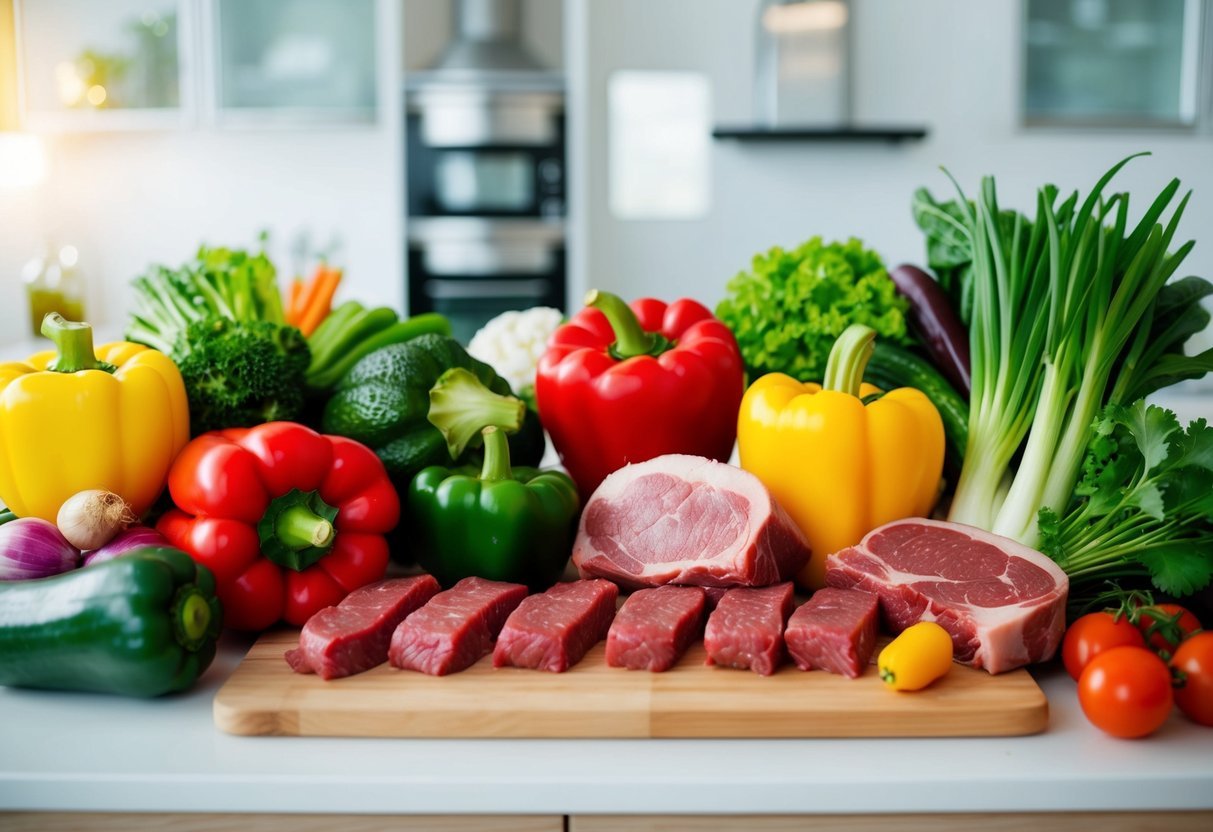
Your dog will love this Beef and Veggie Feast.
It’s packed with lean beef and colorful vegetables that are healthy and tasty.
Start by cooking ground beef in a pan until it’s browned.
Drain any excess fat.
Next, add chopped carrots, green beans, and peas.
These veggies not only add flavor but also provide important nutrients.
Cook the mixture until the vegetables are tender.
You can also add some sweet potato for extra fiber and a hint of sweetness.
Make sure everything is well mixed.
Once it’s ready, let it cool before serving it to your dog.
This dish can be stored in an airtight container in the fridge for 3-5 days or frozen for up to 3 months.
You can adjust the veggie mix based on your dog’s preferences.
Your furry friend will appreciate this delicious meal, and you’ll feel good knowing it’s low in fat and homemade.
4) Salmon and Brown Rice Magic

This recipe combines the rich taste of salmon with the wholesome goodness of brown rice.
Your dog will love it, and it’s healthy too!
Start by cooking 1 cup of salmon.
You can use fresh, canned, or leftover salmon.
Flake it into small pieces once it’s ready.
Next, cook ½ cup of brown rice according to package instructions.
Brown rice is a great source of fiber and helps keep your pup’s digestive system healthy.
Now, mix the salmon and brown rice together.
Add in ¼ cup each of steamed carrots and peas for extra flavor and nutrients.
These veggies boost vitamins and minerals in your dog’s diet.
For a little healthy fat, stir in 1 tablespoon of coconut oil.
It’s a tasty addition that also aids in your dog’s coat health.
Serve this delicious meal warm or portion it out for later.
Your dog will be wagging their tail for more of this salmon and brown rice magic!
5) Lentil and Carrot Crunch

Lentil and Carrot Crunch is a tasty and healthy option for your dog.
This recipe combines lentils and carrots to provide fiber and essential nutrients.
Start by cooking lentils until they are soft.
Then, chop fresh carrots into small pieces.
Mix the cooked lentils and carrots in a bowl.
You can also add a little bit of olive oil for flavor.
Next, spread the mixture on a baking sheet.
Bake it at a low temperature until it gets crunchy.
This usually takes about 30-40 minutes.
Be sure to let it cool before serving it to your dog.
This snack is not only delicious but also healthy.
It’s a great treat that you can feel good about giving your pet.
Plus, the crunchy texture can help clean your dog’s teeth.
You can store any leftovers in an airtight container in the fridge.
Your dog will love having this homemade treat as a reward or snack throughout the day.
Give Lentil and Carrot Crunch a try, and watch your dog enjoy every bite!
Benefits of Low-Fat Dog Food
Choosing low-fat dog food can provide several advantages for your furry friend.
These diets can support their health and make meal preparation easier.
Here are some key benefits to consider.
Health Advantages for Dogs
Low-fat dog food is especially helpful for pets dealing with certain health issues.
For instance, if your dog has pancreatitis, a low-fat diet can reduce stress on the pancreas.
It helps with digestion and can prevent painful flare-ups.
Additionally, low-fat diets can assist overweight dogs in shedding pounds.
Weight management supports joint health and overall mobility.
It can also prevent complications like diabetes and heart disease.
Some specific health benefits include:
- Improved Digestion: Lower fat content means easier digestion for sensitive stomachs.
- Better Weight Control: Helps your dog maintain a healthy weight.
- Reduced Risk of Health Issues: Lowers the chances of conditions linked to high-fat diets.
Understanding Nutritional Content
When you look for low-fat dog food, it’s essential to check the nutritional content.
Low fat does not mean low quality.
A good diet should still provide all necessary nutrients.
Key points to consider include:
- Protein Sources: Look for high-quality protein, like chicken or fish. This ensures your dog gets enough energy.
- Vitamins and Minerals: Essential vitamins and minerals are crucial for your dog’s well-being.
- Fiber: Fiber helps with digestion and keeps your dog feeling full.
You can consider making homemade meals.
Recipes like chicken and rice or turkey and sweet potato can be nutritious and tasty.
These meals can provide balanced nutrition while keeping fat levels low.
Common Ingredients in Homemade Dog Food
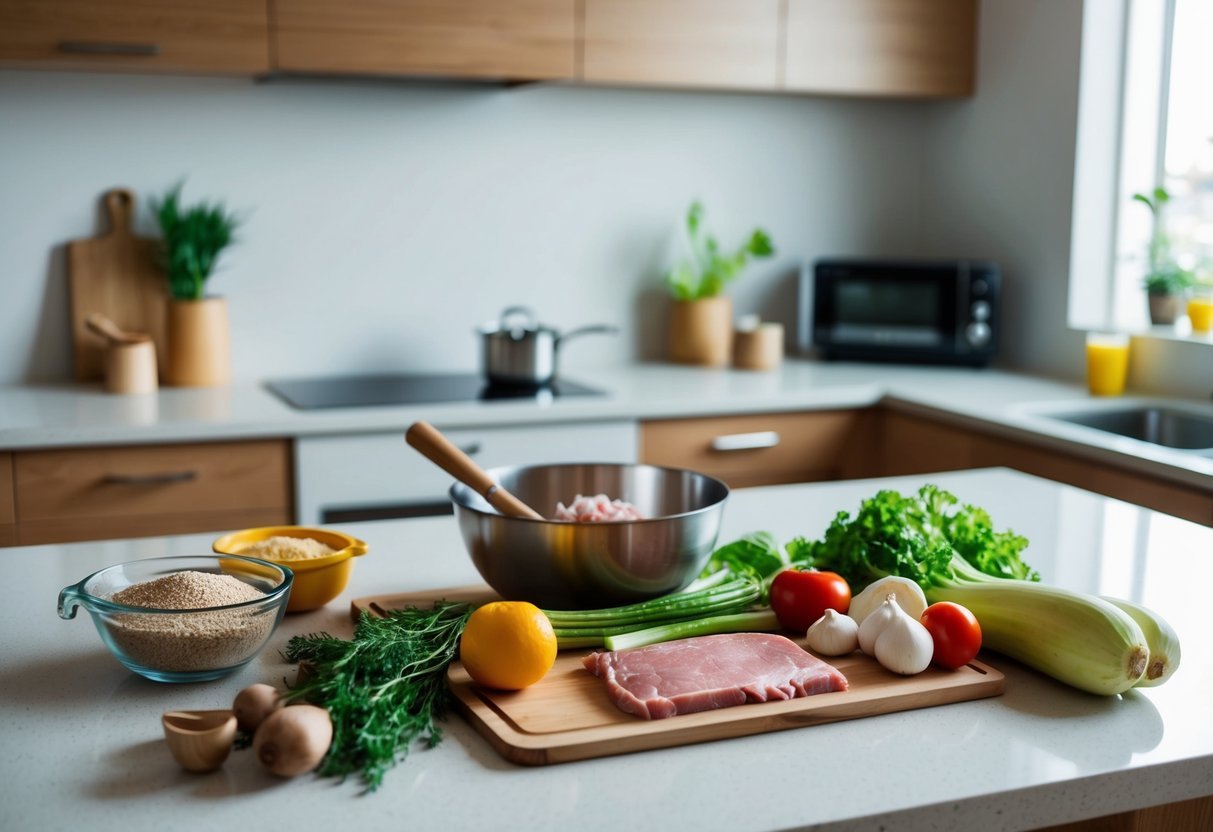
When making homemade dog food, it’s important to choose ingredients that provide balanced nutrition.
You’ll want to focus on healthy proteins and good sources of carbohydrates and fiber.
Both play a crucial role in keeping your pup healthy and satisfied.
Healthy Proteins
Proteins are essential for your dog’s growth and energy.
They help in building muscles and repairing tissues.
Some great protein options include:
- Chicken: A lean meat that is easily digestible and popular among dogs.
- Turkey: Another lean option, high in protein while being low in fat.
- Fish: Salmon and sardines are rich in omega-3 fatty acids and can improve your dog’s coat health.
- Beef: Choose lean cuts to avoid excess fat.
Make sure to cook the meat properly and remove any bones, as they can pose a choking hazard.
These protein sources can be mixed with other ingredients to create tasty meals that your dog will love.
Carbs and Fiber Sources
Carbohydrates and fiber are crucial for your dog’s digestion.
They provide energy and help maintain a healthy gut.
Here are some healthy options:
- Brown Rice: A good source of energy, it’s easy on the stomach.
- Sweet Potatoes: Packed with vitamins and minerals, they are highly nutritious.
- Oats: A great source of fiber that can help with digestion.
- Green Beans: Low in calories but high in fiber, they make a great addition to meals.
Including these ingredients ensures your dog gets a balanced diet.
Remember to introduce new foods gradually to avoid any digestive upset.
Tips for Preparing Homemade Dog Food
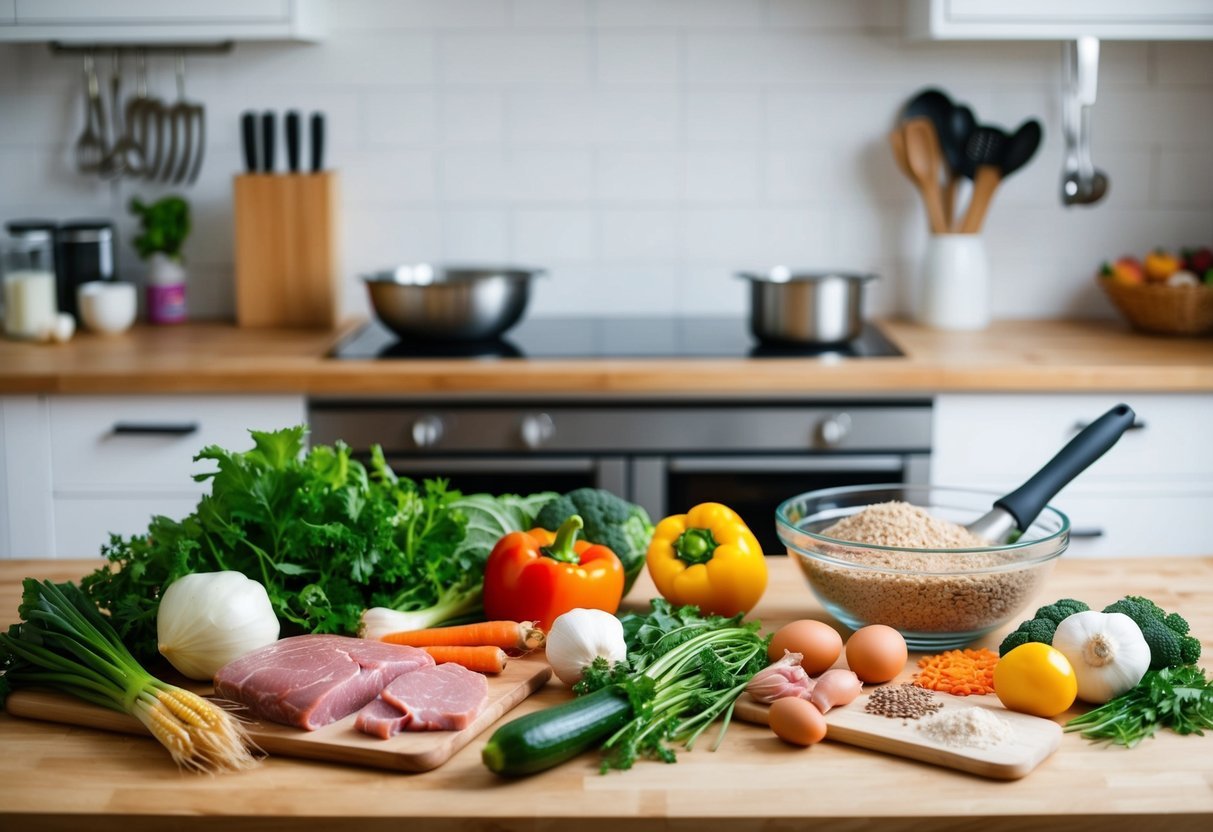
Making homemade dog food is a great way to ensure your furry friend gets a tasty and healthy meal.
To do this right, focus on balancing nutrition and maintaining food safety.
Here are some essential tips to keep in mind.
Ensuring Balanced Nutrition
When preparing meals for your dog, it’s crucial to include all necessary nutrients.
Dogs require a mix of proteins, fats, carbohydrates, vitamins, and minerals in their diet.
Here are key items to consider:
- Proteins: Use lean meats like chicken, turkey, or fish. These should make up about 40% of the meal.
- Carbohydrates: Brown rice or sweet potatoes are excellent choices and can be about 50% of the diet.
- Fats: Healthy fats from fish oil or flaxseed should be included in small amounts.
- Vitamins and minerals: Incorporate vegetables like carrots, spinach, and peas for extra nutrients.
Consult with your vet to tailor your dog’s diet based on specific needs.
Food Safety Guidelines
Maintaining food safety is vital when preparing your dog’s meals.
Follow these guidelines to keep everything fresh and safe:
- Cleanliness: Always wash your hands, utensils, and surfaces before cooking.
- Storage: Store homemade dog food in airtight containers. Refrigerate meals that won’t be eaten within 3 days.
- Temperature: Cook meats thoroughly to kill harmful bacteria. Use a food thermometer when necessary.
- Avoid toxic foods: Keep grapes, onions, and chocolate away from your dog’s meals, as these are harmful.
By sticking to these tips, you can create nutritious and safe meals for your dog that they will love.
Frequently Asked Questions
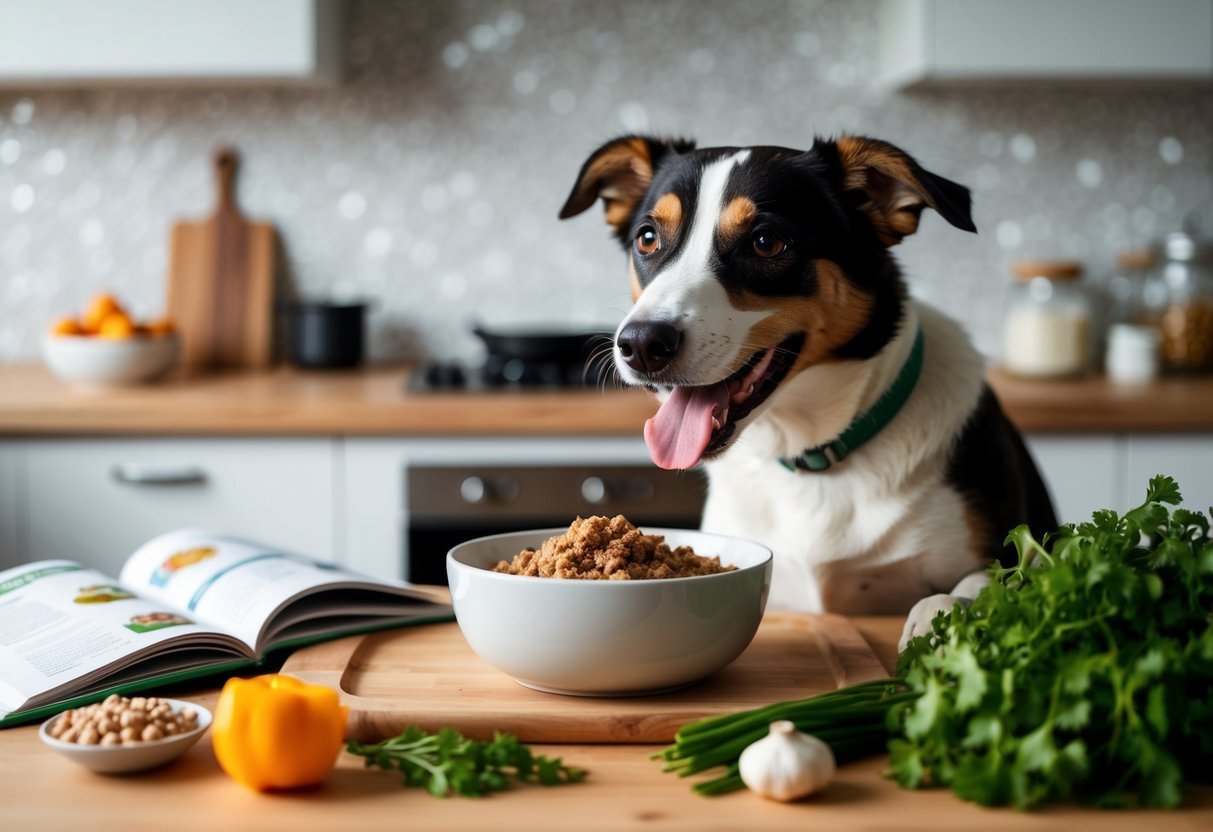
You might have questions about making low-fat dog food at home.
Here are some answers that can help you decide on the best approaches to homemade dog food for your furry friend.
Can you recommend some vet-approved homemade dog food recipes?
Definitely! Dog owners love recipes like Turkey and Quinoa Delight and Chicken and Sweet Potato Munch.
These recipes are not only tasty but also meet many dietary needs.
What’s a simple low-fat dog food recipe that’s better and cheaper than what I can buy?
A great option is the Beef and Veggie Feast.
It combines lean beef with colorful veggies, providing good nutrition at a lower cost than many commercial foods.
How can I make nutritionally complete dog food at home?
To make balanced dog food, include a mix of protein, healthy grains, and veggies.
Using recipes like Salmon and Brown Rice Magic ensures your dog gets all the nutrients they need.
What are some good homemade dog food recipes for my large breed?
Large breeds benefit from hearty meals.
Beef and Veggie Feast is great because it combines protein and fiber.
Adjust portion sizes based on your dog’s weight and activity level.
What should I include in homemade food for my puppy to ensure it’s healthy?
Puppies need extra nutrients for growth.
Include protein sources like chicken or turkey, along with some healthy carbs like sweet potatoes.
Always consult your vet to ensure you’re meeting your puppy’s specific needs.
Do you know a tasty homemade dog food recipe that can help with pancreatitis?
Yes! The Lentil and Carrot Crunch recipe is a wonderful option.
It’s low in fat and includes easy-to-digest ingredients, perfect for dogs with pancreatitis.
Always consult your vet when changing your dog’s diet, especially for health issues.

